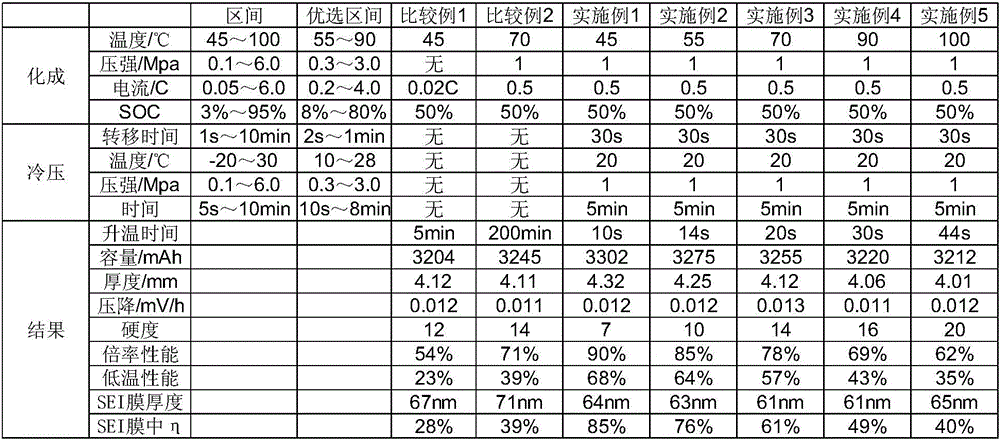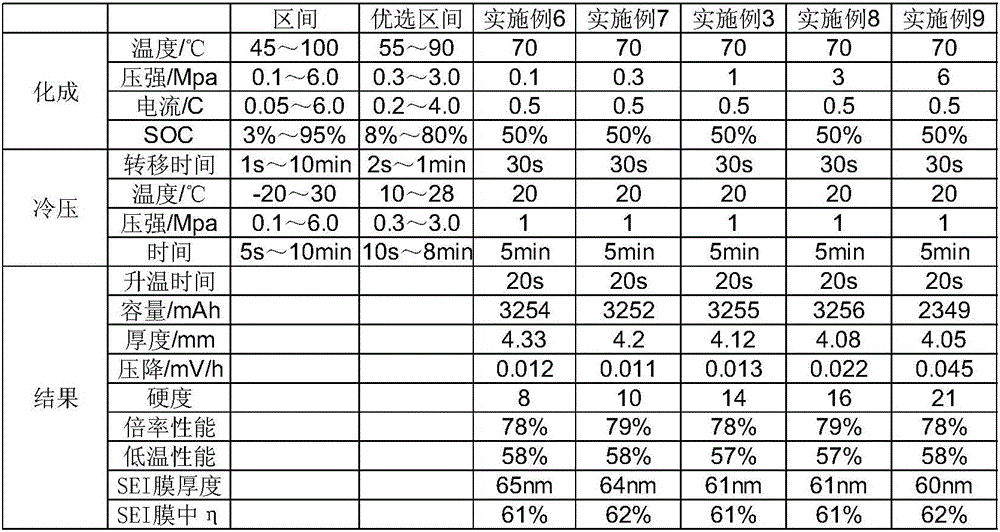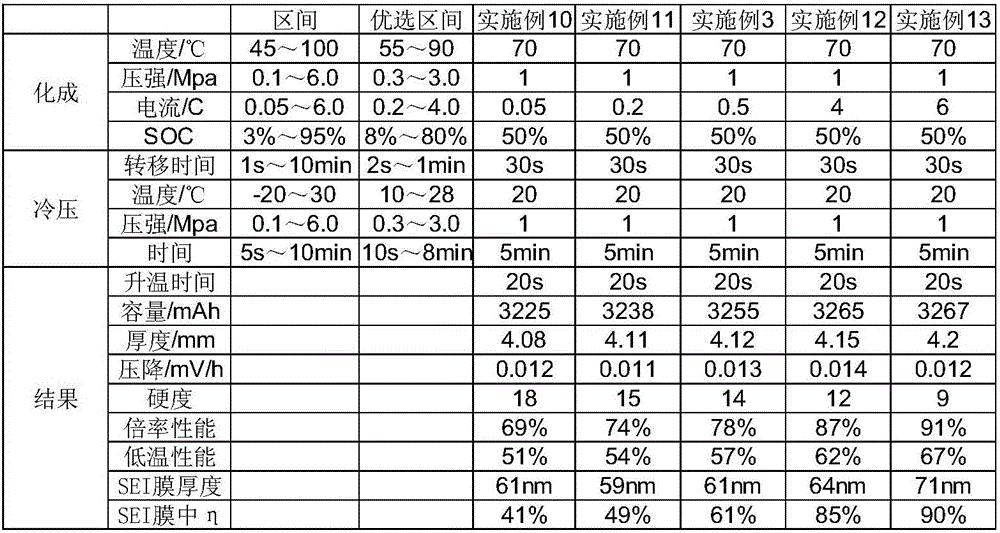A kind of lithium-ion battery solid electrolyte membrane and preparation method thereof
A solid electrolyte membrane and lithium-ion battery technology, applied in the field of lithium-ion batteries, can solve the problems of reducing cell capacity, low-temperature performance and rate performance, and increasing ion transmission resistance, so as to reduce ion transmission resistance and speed up ion transmission. , the effect of shortening the resting time
- Summary
- Abstract
- Description
- Claims
- Application Information
AI Technical Summary
Problems solved by technology
Method used
Image
Examples
preparation example Construction
[0030] The preparation of the negative electrode sheet: the negative electrode slurry (negative electrode active material: binder: conductive agent is mixed in deionized water according to the ratio of mass ratio: 92:3:5) is coated on the negative electrode current collector, then dried, and then After cold pressing, slitting, and welding the negative tabs, the negative electrode sheet is prepared for use.
[0031] Preparation of the positive electrode sheet: the positive electrode slurry (positive electrode active material: binder: conductive agent is mixed in NMP according to the ratio of mass ratio: 93:2:5) is coated on the positive electrode current collector, then dried, and then passed After cold pressing, slitting, and welding the positive tabs, the positive electrode sheet is prepared for use.
[0032] Preparation of cells to be formed: Assemble the prepared positive electrode sheet, negative electrode sheet, and separator into a bare cell, then place it in an aluminum...
Embodiment 1
[0038] Put the cell to be formed into a hot-pressed forming fixture at a temperature of 45°C, and after applying a surface pressure of 1MPa, record the time for the cell to heat up to 45°C; then use a current of 0.5C to charge the cell to 50% SOC , after the completion of the formation, transfer the cell to a cold-pressing fixture within 30s for cold-pressing the cell. The cold-pressing temperature is 20°C, the pressure is 1MPa, and the time is 5min. Afterwards, the pressure of the cold pressing fixture is released to obtain the degassed cell.
Embodiment 2
[0040] Except following difference with embodiment 1, all the other are identical with embodiment 1:
[0041] Put the cell before formation into a hot-pressing fixture at a temperature of 55°C, and record the time required for the cell to heat up to 55°C.
PUM
| Property | Measurement | Unit |
|---|---|---|
| thickness | aaaaa | aaaaa |
| thickness | aaaaa | aaaaa |
| thickness | aaaaa | aaaaa |
Abstract
Description
Claims
Application Information
 Login to View More
Login to View More - R&D
- Intellectual Property
- Life Sciences
- Materials
- Tech Scout
- Unparalleled Data Quality
- Higher Quality Content
- 60% Fewer Hallucinations
Browse by: Latest US Patents, China's latest patents, Technical Efficacy Thesaurus, Application Domain, Technology Topic, Popular Technical Reports.
© 2025 PatSnap. All rights reserved.Legal|Privacy policy|Modern Slavery Act Transparency Statement|Sitemap|About US| Contact US: help@patsnap.com



